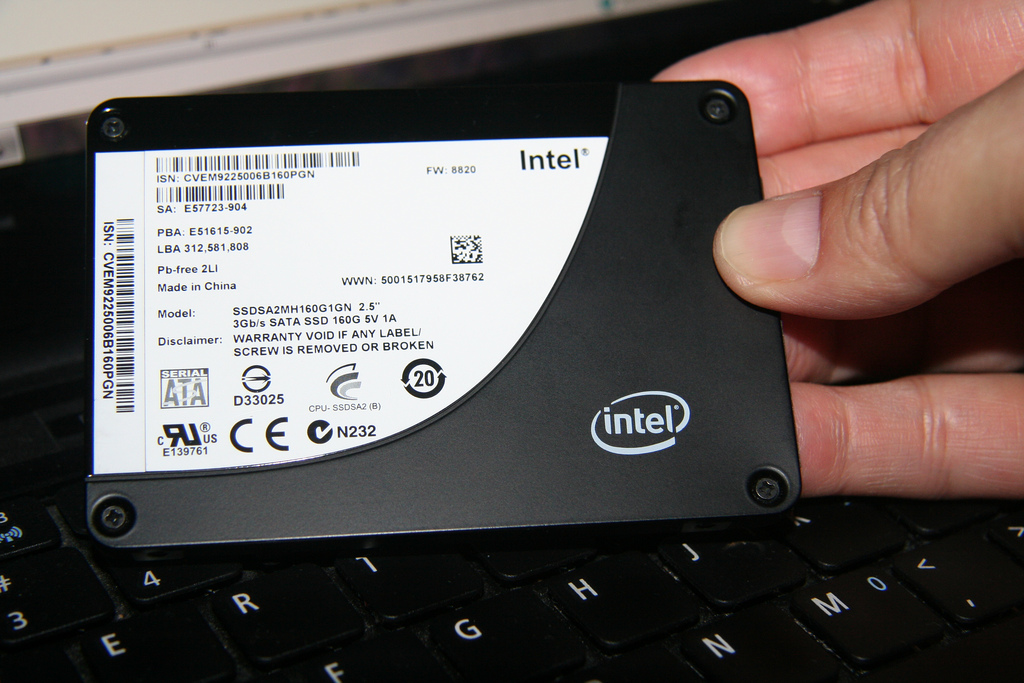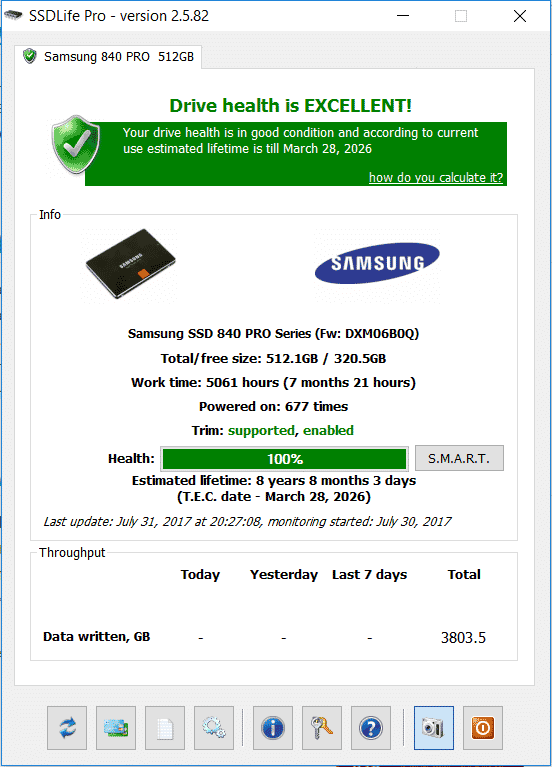

- #Test ssd health mac how to
- #Test ssd health mac install
- #Test ssd health mac password
- #Test ssd health mac download
We’ve also briefly discussed the benefits of solid-state drives.
#Test ssd health mac how to
In this guide, we’ve discussed how to check SSD health on a Mac using the S.M.A.R.T. The “Percentage Used” will tell you how much life your SSD has remained the more the percentage, the lesser the remaining life.
#Test ssd health mac password
Enter your password when asked and press the Return key again.Ī list on the screen will tell you all the information you need about your Mac’s SSD, including available memory, temperature, etc.
#Test ssd health mac install
In the last step, relaunch the Terminal the same way you did before, and type brew install smartmontools & sudo smartctl -all /dev/disk0 into it. Press “Return” and exit the Terminal by pressing the Control + X on your Mac keyboard. Press Control + O simultaneously to save the file. Copy and paste the export PATH=/usr/local/bin:$PATH command into the new window. Press “Return”.Ī new blank window will open. The “Next steps” text will appear at the end, asking you to add the path to Homebrew.Ĭopy the command nano ~/.zshrc and paste it into the Terminal. Wait patiently until you see the “Installation successful” text appear. The Terminal will start the installation and give you updates. Again, press “Return” to permit to install. The Terminal will give you a list of items that will be installed. Visit the Homebrew official website, copy the line displayed on the page, paste it into the Terminal and hit the Enter key.Įnter your Mac password to grant access and press the Return key again. In the second step, click the Launchpad icon, type “Terminal” in the field, and select it to launch the program. Agree to the Terms and Conditions and close the app once it’s set up. Once installed, open the app in the “Utilities” folder and agree to the software license-type in your Mac password to continue.
#Test ssd health mac download
To use smartmontools on your Mac, you must first download Xcode from the App Store. Though it might take longer, you can also check the SSD health in your Mac using smartmontools following these steps.

There can be many reasons for problems in SSD however, over time, wear is also something that happens when the drive has been operational for too long. Status is “Verified”, you’re in luck, as it means that the SSD health is okay and there are no problems for now.Ī “Failing” status indicates an ongoing problem or error in the SSD, which might turn “Fatal” soon.Īs the name suggests, a “Fatal” status means that you must immediately back up your important data as the drive will expire soon. It would be either “Verified”, “Failing”, or “Fatal”.Select the drive you want to check the details in the right pane.On the left pane, navigate to “Hardware” > “Storage”.Press the Option key on your keyboard and select “System Information”.On the top-left corner of your Mac, tap the Apple icon.With these steps, you can quickly check your SSD health using the S.M.A.R.T. ( Self-Monitoring Analysis and Reporting Technology) on your Mac computer is a system that automatically checks the installed HDDs and SSDs. If you don’t know how to check SSD health on your Mac, follow our 2 step-by-step methods to accomplish this task quickly. SSDs have started gaining preference over HDDs in the past few years for the following reasons. Hence, it’s essential to keep their health in check, as you might not become aware of any fault in your SSD before it’s too late. They work, and they expire, just like any other drive. However, with all their qualities, SSDs are not indestructible.

Unlike traditional hard drives, SSDs are much smaller and offer many benefits to users, which is why most companies, including Apple, have started using SSDs.
A solid-state drive or SSD is a storage component that’s present in a computer.


 0 kommentar(er)
0 kommentar(er)
